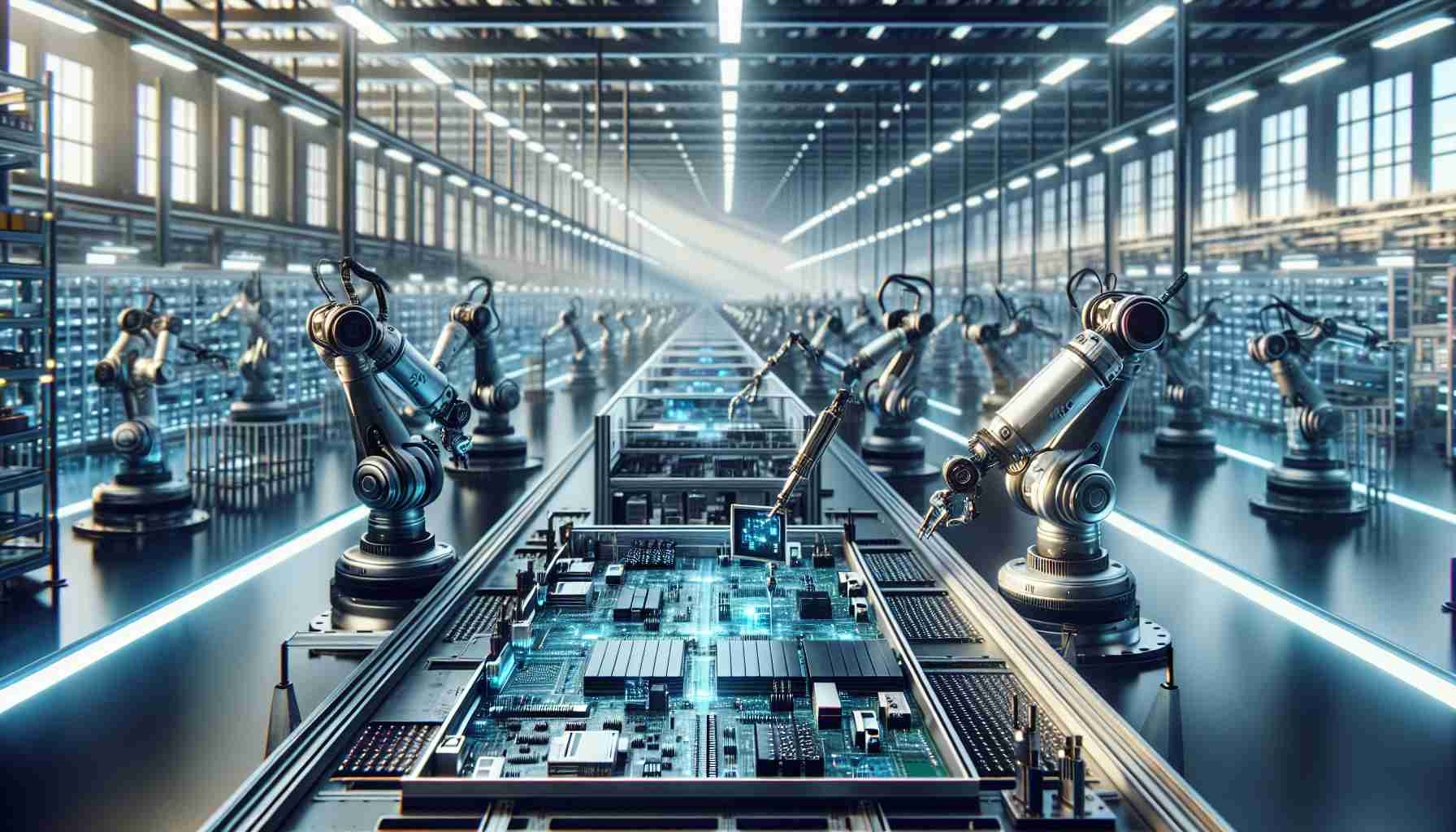Apple Unveils Groundbreaking Efforts to Revolutionize iPhone Manufacturing
In a game-changing move, Apple has set its sights on a future where automation takes center stage in the production of iPhones, significantly reducing the need for human workers. Spearheaded by Sabih Khan, Apple’s Senior VP of Operations, this bold directive comes on the heels of a recent upheaval at Foxconn’s main assembly facility.
Embracing Innovation Amidst Technological Advancements
To achieve this monumental shift, Apple is fast-tracking long-dormant automation projects within its supply chain, overcoming initial cost barriers to propel efficiency forward. The formidable machinery required for this automated overhaul commands substantial investments, with Apple leveraging its influence to encourage partners to embrace this transformative change.
A Glimpse into the Automated Future of iPhone Production
Peter Thompson, an instrumental figure in Apple’s operations, leads the charge in automating key aspects of iPhone assembly. Collaborating closely with renowned manufacturers like Foxconn and Pegatron, Thompson’s team has made significant strides in automating intricate assembly processes, minimizing human intervention in tasks such as bracket installation and circuit board alignment.
Driving Workforce Evolution and Optimization
As Apple continues to streamline its operations, reports indicate a notable decline in the number of employees monitored for work-hour compliance across manufacturing partners. Through strategic automation efforts, significant workforce reductions have already been witnessed, marking a pivotal shift in Apple’s production landscape.
Unveiling Strategic Acquisitions and Technological Advancements
Apple’s endeavor towards automation has been bolstered by strategic acquisitions like DarwinAI and Drishti. These acquisitions have fortified Apple’s position in harnessing cutting-edge technology to address production bottlenecks in real-time, paving the way for unprecedented advancements in efficiency.
A Path to a Transformed Production Landscape
While faced with challenges along the way, Apple remains unwavering in its commitment to automated innovation. With aspirations to halve the workforce on iPhone assembly lines, Apple’s journey towards a futuristic era of production is set to redefine industry standards and pave the way for a revolutionary shift within the tech giant’s operations.
Exploring Apple’s Transition Towards Fully Automated Production
In the midst of Apple’s ambitious push towards automating production processes, several key questions arise, shedding light on both opportunities and challenges associated with this transformative shift.
Key Questions:
1. How does Apple plan to address potential job displacement resulting from increased automation?
2. What long-term cost implications are anticipated with the integration of extensive automation in production?
3. How will Apple ensure product quality and consistency with reduced human intervention in assembly processes?
Addressing Challenges and Controversies:
– Job Displacement: One of the primary concerns revolving around Apple’s shift towards automated production is the potential displacement of human workers. While automation promises increased efficiency and cost savings, the impact on the workforce remains a contentious issue.
– Quality Control: Ensuring consistent product quality without extensive human oversight poses a significant challenge. Maintaining rigorous quality control measures in an automated production environment is crucial to uphold Apple’s reputation for excellence.
– Ethical Considerations: The ethical implications of reducing human involvement in manufacturing processes raise ethical dilemmas related to job security and the broader societal impact of automated production.
Advantages and Disadvantages:
Advantages:
– Enhanced Efficiency: Automation streamlines production workflows, leading to faster turnaround times and increased output capacity.
– Cost Savings: Over time, automation can lower production costs by reducing labor expenses and minimizing errors.
– Innovation Acceleration: Automated processes enable rapid innovation cycles, allowing Apple to introduce new products and features more swiftly.
Disadvantages:
– Job Losses: Increased automation could result in job losses for manual laborers, potentially impacting communities dependent on manufacturing jobs.
– Technical Challenges: Implementing and maintaining complex automated systems may present technical hurdles and require ongoing updates and maintenance.
– Dependency Risks: Relying heavily on automation may pose risks in the event of system failures, necessitating robust contingency plans to prevent disruptions in production.
Suggested Related Links:
– Apple’s Official Website
With these critical considerations in mind, Apple’s journey towards a fully automated production landscape showcases a paradigm shift in the tech industry, signaling a future where efficiency and innovation intersect with evolving workforce dynamics. As Apple navigates the intricacies of automated manufacturing, the company stands at the forefront of a transformative era in the realm of technological production.
